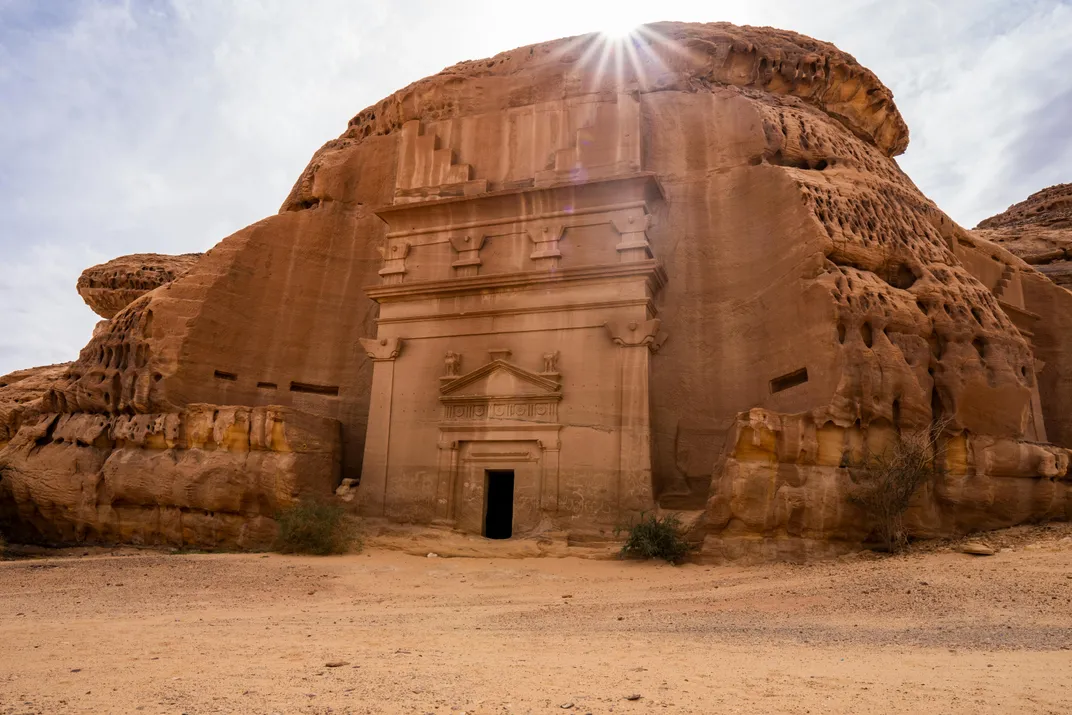
Th1
Hegra, also known as Mada’in Salih, is a breathtaking testament to the Nabataean kingdom’s architectural and cultural achievements. As Saudi Arabia’s first UNESCO World Heritage Site, it represents a critical chapter in pre-Islamic history, standing as a preserved link to a bygone era of trade, innovation, and cross-cultural exchange.
Historical Background of Hegra
Located in the Al-Ula region of Saudi Arabia, Hegra dates back to the 1st century BC, during the height of the Nabataean kingdom. This civilization, known for its expertise in trade and engineering, flourished between the 3rd century BC and the 1st century AD.

Hegra served as the southern hub of the Nabataean trade network, strategically positioned along the caravan routes that transported incense, spices, and luxury goods from Arabia to the Mediterranean. The city’s connection to its sister city, Petra, highlights the kingdom’s vast reach and influence across the Arabian Peninsula and beyond.
Architectural Marvels of Hegra
Rock-Cut Tombs: Eternal Resting Places
Hegra is best known for its 111 rock-cut tombs, which serve as a window into Nabataean funerary practices. Carved into sandstone cliffs, these tombs reflect a remarkable blend of Greek, Roman, and Egyptian architectural styles. The façades are adorned with intricate carvings, symbolic motifs, and inscriptions in Aramaic, showcasing the Nabataeans’ artistry and cultural interconnectedness.

One of the most iconic structures is Qasr al-Farid, or “The Lonely Castle.” This unfinished tomb, isolated from other tomb clusters, exemplifies the grandeur of Nabataean design while raising questions about the reasons behind its incomplete state.
Ingenious Desert Engineering
Hegra’s archaeological remains reveal sophisticated water management systems, including wells and channels that sustained the city’s population in one of the world’s most arid environments. These innovations underscore the Nabataeans’ expertise in adapting to and thriving in harsh desert conditions.

Cultural and Historical Significance
A Center of Trade and Influence
Hegra’s location made it a pivotal center for the Nabataean trade network, fostering economic and cultural exchanges between Arabia, the Mediterranean, and beyond. This role is reflected in the tombs’ inscriptions, which provide rare insights into the city’s inhabitants and their connections to neighboring regions.

A UNESCO Heritage Site
In 2008, Hegra was inscribed as Saudi Arabia’s first UNESCO World Heritage Site. This designation highlights its universal cultural value and emphasizes the importance of preserving its unique historical and architectural heritage.
Rediscovery and Modern Preservation
Hegra was largely forgotten after the decline of the Nabataean kingdom, remaining untouched for centuries. Rediscovered by European explorers in the 19th century, the site has since become a focal point for archaeological study and cultural tourism.

In recent years, Saudi Arabia has invested in initiatives like the AlUla Vision, which aims to promote Hegra as a global destination. These efforts have not only enhanced accessibility to the site but also raised awareness of its historical significance.
Analysis: Lessons from Hegra
Hegra’s story offers profound lessons about cultural resilience, innovation, and the impermanence of human endeavors. The Nabataeans’ ability to thrive in challenging environments demonstrates their ingenuity and adaptability, while the lack of written records invites ongoing exploration and interpretation.

Modern efforts to preserve Hegra underscore the role of cultural heritage in fostering a sense of idenтιтy and connection to the past. As climate change and human activity pose new challenges, the importance of safeguarding such sites for future generations cannot be overstated.
Conclusion: A Timeless Legacy
Hegra stands as a silent witness to the ingenuity of the Nabataean kingdom and the interconnectedness of ancient civilizations. Its rock-cut tombs, blending artistry with engineering, remain a source of inspiration and mystery. As a UNESCO World Heritage Site and a cornerstone of Saudi Arabia’s cultural narrative, Hegra invites the world to marvel at its enduring beauty and reflect on the legacies of the past.